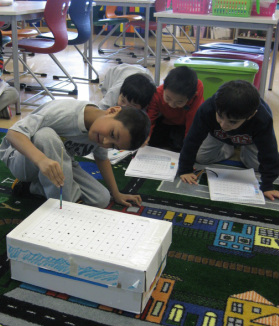
So before we design a submersible to explore the ocean floor, we better know what the ocean floor looks like! We wouldn't want a thruster to drive a submersible into a large rock or an underwater cliff.
One kind of technology that ocean engineers have designed is the sounding pole. The sounding pole is placed into the water and when it hits the bottom of the ocean floor, a color-coded key tells us how deep the ocean is at the point the sounding pole was placed.
More advanced than the sounding pole is sonar! Sonar uses sound waves to map the ocean floor, giving us a more accurate representation. Click here to find out more about sonar technology.
One kind of technology that ocean engineers have designed is the sounding pole. The sounding pole is placed into the water and when it hits the bottom of the ocean floor, a color-coded key tells us how deep the ocean is at the point the sounding pole was placed.
More advanced than the sounding pole is sonar! Sonar uses sound waves to map the ocean floor, giving us a more accurate representation. Click here to find out more about sonar technology.
 RSS Feed
RSS Feed